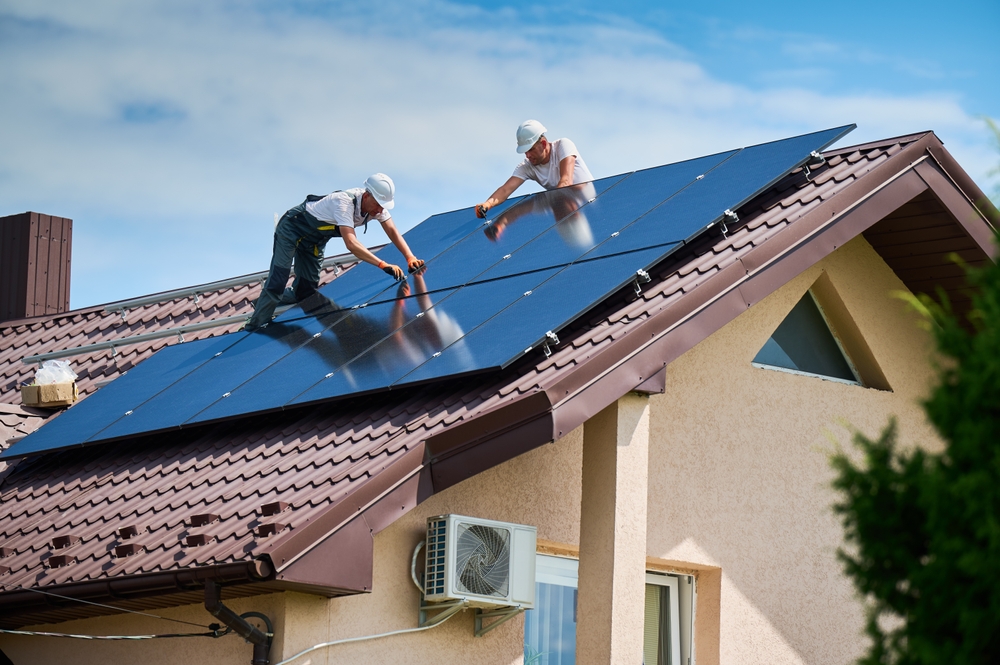The global push towards renewable energy and the fight against climate change have intensified the interest in solar energy. Amid rising electricity costs and environmental concerns, homeowners are increasingly contemplating solar panels as an enticing investment. Yet, the question remains: Are solar panels truly worth it?
The Cost of Solar Panels
Initially, the price of solar panels can be daunting. The upfront cost for purchasing and installing solar panels can range between $15,000 and $25,000 for the average home, depending on the size and location. However, this price does not encompass only the panels. It covers inverters, racks, wiring, and installation labor. Despite the high initial cost, several financial incentives exist to alleviate this burden.
Federal Tax Credit: The U.S. government offers the Solar Investment Tax Credit (ITC), which presently allows you to deduct 30% of your solar energy system cost from your federal taxes.
State and Local Incentives: Many states provide additional incentives such as tax credits, rebates, and performance payments to further encourage solar panel installations.
Solar Leases and Power Purchase Agreements (PPAs): If upfront costs are prohibitive, you might consider solar leases or PPAs, where a third party owns the panels, and you pay a fixed rate for the electricity generated.
Benefits of Solar Panels
The decision to invest in solar panels is not merely a financial one but also an environmental and personal lifestyle choice. Some key benefits include:
- Environmental Impact: Solar panels significantly reduce your carbon footprint. By replacing fossil fuel energy with solar, you’re contributing to a reduction in harmful emissions and promoting cleaner air.
- Energy Independence: Relying on solar power provides a measure of independence from the ever-fluctuating electricity market and its price hikes.
- Increased Home Value: Homes with solar panels often attract buyers willing to pay a premium, as these homes promise reduced electricity costs long-term.
- Low Maintenance: Once installed, solar panels require minimal maintenance. They are designed to weather various elements and degrade very slowly, often carrying warranties of up to 25 years.
- Technological Advancements: Continuous improvements in solar technology make panels more efficient and aesthetically pleasing. Some modern solar panels and shingles integrate seamlessly with your roof design.
Factors to Consider
Before diving into a solar investment, there are several factors to consider to maximize your return on investment (ROI).
Location and Sunlight Exposure: Ideally, your home should receive abundant sunlight throughout the year. Consider your geographical location, your roof’s orientation, and shading factors such as trees or adjacent buildings that might block sunlight.
Roof Condition: Since solar panels can last about 25-30 years, your roof should be in good condition and compatible with solar installations. If your roof needs repair or replacement soon, it might be prudent to complete that work before installing solar panels.
System Size: Assess your household’s energy consumption to determine the appropriate system size. Installing a system that efficiently meets your energy needs will maximize cost savings.
Electricity Costs: In regions with high electricity rates, the payback period for solar panel costs is generally shorter, making it a more attractive option.
Financing: Explore different financing options, including loans, leases, and PPAs. Each option has distinct terms, benefits, and impacts on your savings.
Challenges and Potential Drawbacks
While the benefits of solar panels are plentiful, it is essential to discuss potential downsides that could influence your decision.
- Initial Investment: The substantial upfront cost is undoubtedly a barrier for many, even with available incentives.
- Weather Dependence: Solar panels’ performance hinges on sunlight. Therefore, in regions prone to cloudy or rainy weather, the energy output may fall short of expectations.
- Space Requirements: Optimal energy savings from solar panels require sufficient roof space and proper orientation, which might not be feasible for all residential structures.
- Aesthetic Concerns: Though design improvements have been made, some homeowners may find solar panels unsightly or incompatible with their home’s architecture.
- Technology Limitations: The energy storage solutions like solar batteries, which are vital for maximizing self-consumption of the generated power, are still costly, potentially increasing the overall investment.
Evaluating the ROI
To determine whether solar panels are a worthy investment, calculate the estimated ROI by considering the following:
Initial Costs vs. Savings: Compare the upfront investments with the projected savings on energy bills over time, also factoring in potential maintenance costs.
Payback Period: This refers to the time required for your energy savings to equal the initial investment. A shorter payback period makes the investment more appealing.
Long-Term Savings: With a typical lifespan of 25-30 years, the cumulative savings on electricity often outweigh the initial costs significantly.
Conclusively, experience suggests that in areas with high electricity costs and abundant sunlight, solar panels are not just environmentally advantageous but economically beneficial in the long run.
Ultimately, the worthiness of solar panels is contingent on personal circumstances, geographic location, and individual priorities. For many, the amalgamation of financial savings, environmental benefits, and energy independence makes solar panels an attractive investment. However, it is crucial to carefully analyze potential costs, savings, and practical considerations before proceeding.
Investing in solar energy is not a decision to be taken lightly, but with comprehensive research and thoughtful planning, it can prove to be a substantial and rewarding investment into a sustainable future. As the technologies advance and the world pivots increasingly towards renewable energy, those who invest in solar now will find themselves with a strategic advantage in the years to come.



